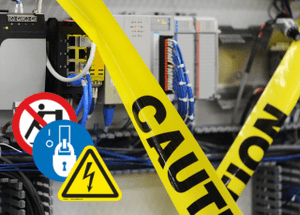Why 811 Day is Important for Employers

Underground utility marking is crucial to keeping worksites, facilities, and properties compliant with state regulations and workers safe and protected, although in addition to important marking processes, there is another process that is critical to all excavation operations, and that is 811 protocol. Known as the national call before you dig phone number, the number 811 should always be called before digging to identify the location of any buried utilities and dangerous underground equipment for both industry professionals and homeowners alike. Every year on August 11th is when 811 day is recognized for all digging projects, with a goal to encourage more people to avoid potentially dangerous and costly accidents underground.
How Does 811 Work?
Before starting any outdoor digging project, contractors and homeowners should
dial 811 or visit their state’s 811 website and submit a request at least three
days in advance to request to have underground utility lines marked. Requests
to have utility operators locate underground lines, including natural gas,
electric, water, sewer, telephone, and cable lines, can be made 24-hours a day,
seven days a week. This service is free to use and is provided for the
wellbeing of the community.
When calling 811, homeowners and contractors are connected to their local call center, which notifies the appropriate utility companies of their intent to dig. Professional locators then arrive at the digging site to mark the approximate locations of underground lines with flags, stakes, or spray paint. Once you’re aware of where these lines are, you can avoid severe accidents that can inflict deadly injury and incur catastrophic damages. Digging into an underground line is not only dangerous, but it has the potential to shut down a community’s access to that utility until the line can be repaired, requiring an immense amount of manpower and costly resources to resolve.
The Consequences of Not Contacting 811
The Common Ground Alliance (CGA)
- an association dedicated to preventing damage to underground utility
infrastructure and protecting those who live and work near them – releases annual
reports that examine the impact that failing to call 811 in a digging or
excavation project has. In 2019, their Damage Information Reporting Tool (DIRT)
Report estimated the annual societal costs of damages to buried utilities in
the U.S. to be approximately $30 billion. This estimate focuses on the economic
impact to society and calculates direct costs (facility repair) and indirect
costs (property damage, medical bills, and businesses unable to operate).
Beyond the immediate human safety concerns, there are often environmental consequences to digging without prior inspection. Natural gas damages (like methane) often result in releases of the product into the atmosphere, and hazardous liquid pipelines can transport a variety of products such as oil, gasoline, liquid propane, and jet fuel, which can cause environmental damage, especially in bodies of water. Damages to wastewater and sewer pipes can release sewage in natural areas or drinking water sources, and water distribution pipe damage can result in the loss of valuable drinking water supplies – which is especially dangerous in areas already in a drought.
Potential impacts from improper digging can vary significantly depending on the facility impacted and the severity of the damage. In all cases, when damage occurs, the project uses extra resources and equipment to repair the damages. Depending on the specifics of the damage event, extra excavation and equipment traffic could temporarily damage sensitive natural areas which could lead to:
- Disruption of existing vegetation
- Disruption to rare/endangered species
- Change in habitat type and composition
- Introduction of invasive species
- Additional soil erosion
- Additional soil compaction
- Additional soil profile disruption
What Causes Excavation Damage?
While the above consequences may seem
to only impact the natural environment, these changes can have drastic effects
on local infrastructure and safety due to unexpected conditions. According to
the CGA, the most common incidents in 2020 that caused major damage due to
digging were:
- Failure to notify the one call center/811
- Excavator dug before verifying marks by test-hole (pothole)
- Failure to maintain clearance
- Digging in abandoned facilities
- Locator error
Your Responsibility as an Employer
In regards to employers, OSHA outlines requirements according to their own
published excavation standards. Before starting work, the Excavation standards
require employers to do the following with or without help from 811:
- Determine the approximate location(s) of utility installations — including sewer, telephone, fuel, electric, and water lines. The best way to do this is to call 811 to establish the location of any underground utility installations in the work area.
- Contact and notify the utility companies or owners involved to inform them of the proposed work within established or customary local response times.
- Ask the utility companies or owners to establish the location of underground installations prior to the start of excavation work. If they cannot respond within 24 hours (unless the period required by your state or local law is longer) or cannot establish the exact location of the utility installations, employers may proceed with caution, which includes using detection equipment or other acceptable means to locate utility installations.
- Determine the exact location of underground installations by safe and acceptable means when excavation operations approach the approximate location of the installations.
- Ensure that while the excavation is open, underground installations are protected, supported, or removed as necessary to safeguard workers.
In addition to following OSHA’s excavator guidelines, some best practice recommendations are to only use hand tools while digging within 24 inches of location markers, while making sure that all utility flags, stakes, or pain marks are left in place until the project is finished.
Your Partner in Marking Compliance
811 is a free service that helps excavators and
contractors avoid unnecessary costs and damages, to aid contractors in calling before
digging, utility line manufacturers and installers should be implementing best
practice pipe markings and signage to avoid unnecessary contact with their
equipment. If you're looking to update your pipe marking or safety sign system,
visit our online catalog to view up to date ANSI/ISO best practices and designs.
Feel free to reach out to our team today with any questions or clarifications on how this may
impact your operations!



